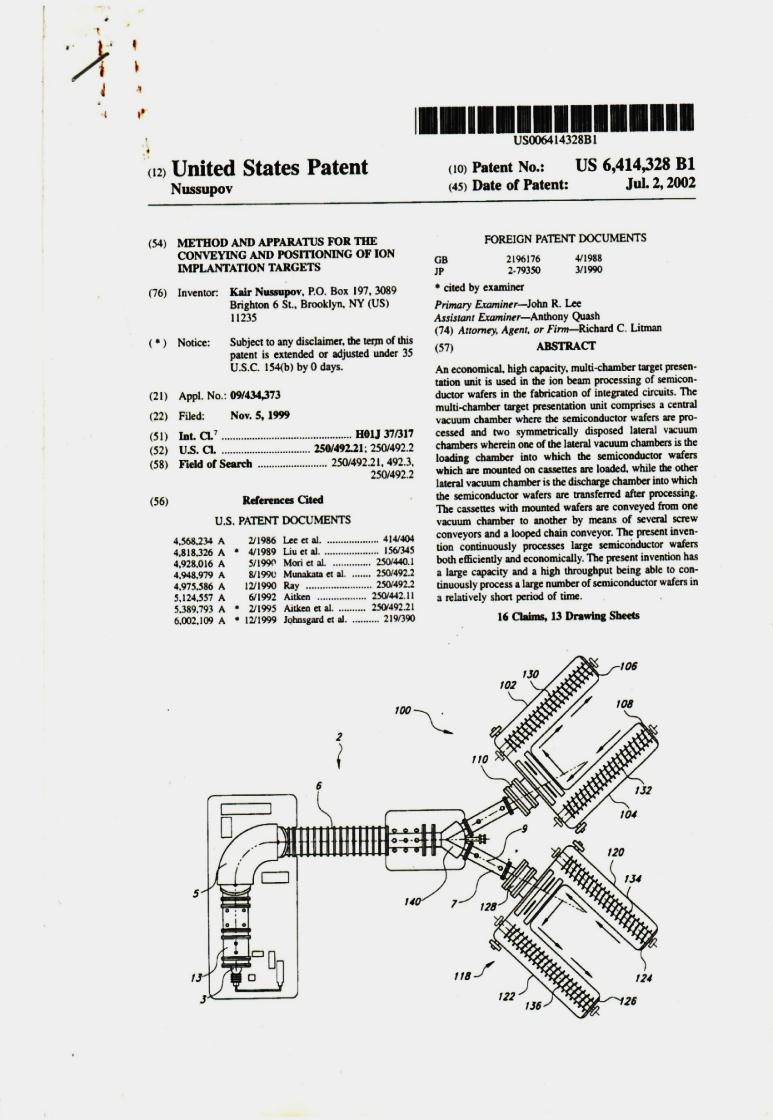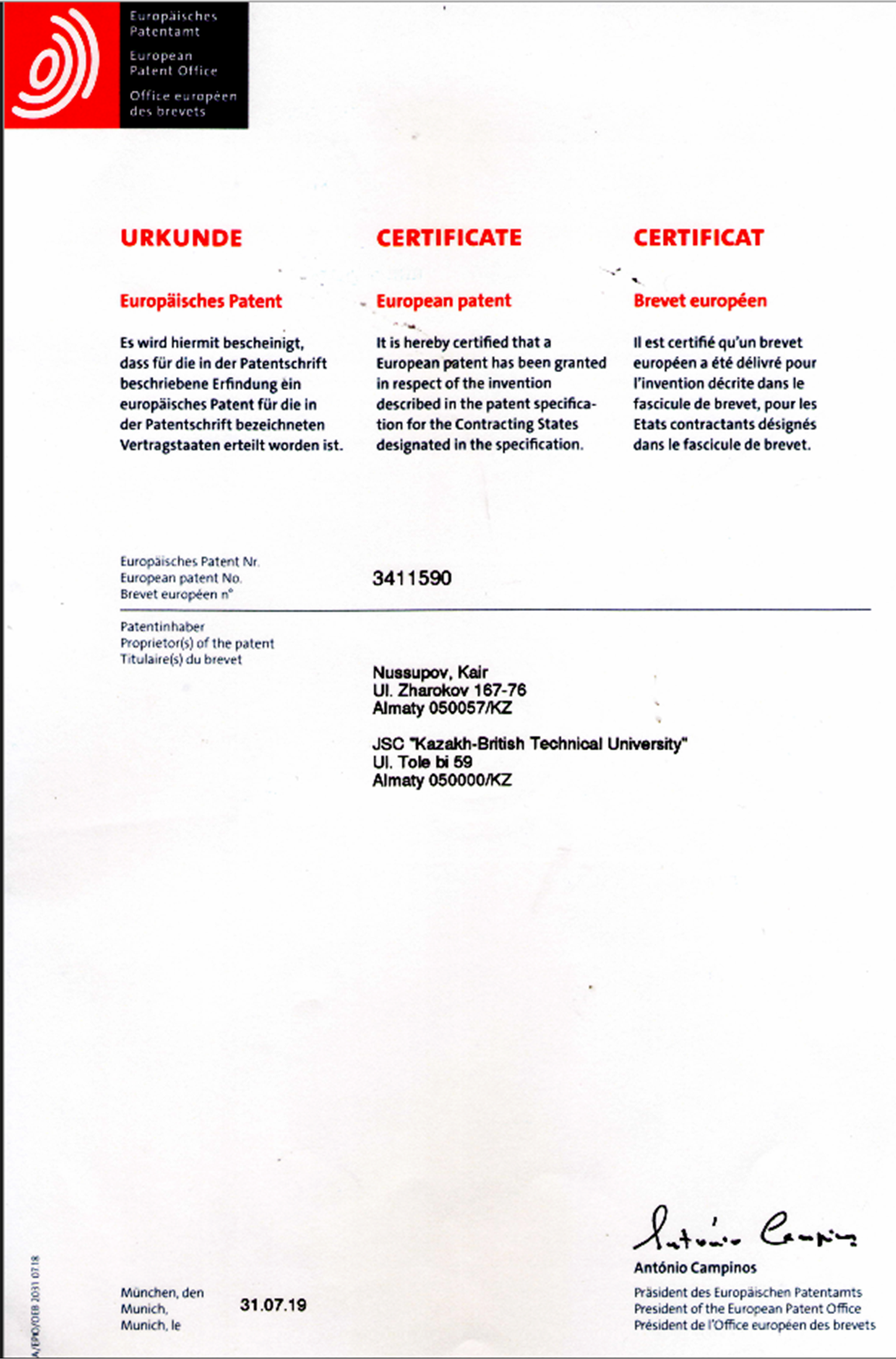Лаборатории
В организационную структуру входят 8 учебных, 6 специализированных научно-исследовательских лабораторий и компьютерные классы.
Нефтяной Инженерный Институт «Один Пояс, Один Путь» создан в рамках Перспективного плана сотрудничества в области науки, технологий и инноваций в партнерстве с Энергетическими университетами и нефтяными компаниями стран Азии и Европы, для реализации государственной инициативы «Один Пояс, Один Путь».
Лаборатория кибербезопасности была создана в Казахстанско-Британском техническом университете 1 сентября 2018 года в рамках консорциума по кибербезопасности c Комитетом информационной безопасности Министерства оборонной и аэрокосмической промышленности Республики Казахстана.
Лаборатория перспективных разработок электроники была создана в 2017 году в Казахстанско-Британском техническом университете.
The main purpose of the laboratory is to conduct basic research in the field of natural sciences, chemical technology, petrochemistry and metallurgy .
1 Ускоритель легких и тяжелых ионов, предназначенный для создания p-n-переходов и выращивания пленок методом ионно-лучевого осаждения низкоэ
была создана в Казахстанско-Британском техническом университете 2 мая 2011 года под руководством профессора Нусупова К.Х. 15 октября 2018 года преобразована в Научно-образовательный центр альтернативной энергетики и нанотехнологий (НОЦ АЭиН).

Laboratory of Nanotechnology – was founded at Kazakh-British Technical University on May 2, 2011 under the guidance of a professor Nusipov K. H.
Mission
- The Laboratory of Alternative Energy and Nanotechnology strives to become a dynamic innovation center focused on improving the quality of scientific, educational, technological, research, innovation, project and entrepreneurial activities, as well as developing partnerships with internal and external communities (commercialization).
- The Laboratory of Alternative Energy and Nanotechnology aims to train highly qualified scientific, pedagogical and managerial personnel capable of making an effective contribution to the development of the country.
- • The Laboratory of Alternative Energy and Nanotechnology integrates science and education, forming a research and production complex for the development of technologies for various alternative energy facilities (solar, wind, biological, etc.).
Objectives
- Development of a complex of technologies for the production of solar cells and solar modules, both ground-based and space-based.
- Development and production of wind turbines based on our own patents.
- Synthesis and research of silicon carbide and diamond-like carbon films for nanoelectronics.
- Development of basic ion-beam installations (accelerator technology, etc.) and electronic guns: electron-ion and magnetic optics, magnetic analyzers and spectrometers for studying climate disasters.
Research and development activities
- A set of technologies for the production of one-sided and two-sided solar panels:
1) technology for obtaining a smooth mirror surface of silicon wafers;
2) technology for obtaining high–quality p–n junction;
3) the technology of manufacturing a selective emitter for efficient use of the blue part of the solar spectrum and increasing efficiency;
4) silicon surface passivation technology to increase efficiency;
5) technology of synthesis of Si and SiC nanocrystals to convert the ultraviolet part of the spectrum into the visible region of the spectrum and increase efficiency;
6) development of methods for determining the thickness, chemical composition and structure of layers;
7) technology for the synthesis of an effective diffusion barrier based on TiNx and other compounds between copper metallization and silicon substrate;
8) technology of synthesis of TiSi2 nanolayers for the contact system;
9) technology for creating a multilayer contact system of the front and back sides of the element to increase the service life of solar panels;
10) technology of synthesis of antireflective coatings of solar cells;
11) photolithography technology for layer-by-layer deposition of nanostructures;
12) laser trimming of silicon wafers to remove short circuits;
13) lamination technology and encapsulation of solar panels;
14) methods of measuring volt-ampere characteristics and efficiency;
15) testing of solar modules on a solar simulator;
16) assembly of mini-electric power plants, etc.
- Creating a multi-stage wind turbine;
1) development and patenting of new wind turbines;
2) production of prototypes of wind turbines;
- Synthesis of high-quality monocrystalline and nanocrystalline silicon carbide and diamond films for nanoelectronics
1) Synthesis and research of amorphous and crystalline silicon carbide films for nanoelectronics.
2) Synthesis and research of diamond-like carbon films for nanoelectronics.
LAEaN Equipment
There are 24 types of technological and research installations.
Implemented developments
- double-sided solar panels at the power plant in the SEZ PIT "Alatau". Successful operation for three years. The invested funds paid off due to the generation of electricity.
- multi-stage wind installation on the shore of Kapshagai Lake;
- solid films for various purposes (SiC, Si, Ti, TiN, Ta, Ta, W2, Al, Cu);
- accelerator of light and heavy mass-separated ions at KBTU.

A solar power plant manufactured at KBTU. Commissioned by InTech publishing company by KBTU employees (Nussupov K.Kh ., Beisenkhanov N.B.) voluminous chapters have been written in the books: a) "Silicon carbide – Materials, Processing and Applications in Electronic Devices" (46 pages). b) "Physics and Technology of Silicon Carbide Devices" (50 pages). On 01.12.2018, thousands of registered requests from 193 countries of the world were received by the heads of KBTU employees.

The US patent of the Kazakh inventor K.H. Nussupov on accelerator technology (Nussupov Kair Method and apparatus for the conveying and positioning of ion implantation targets”. United States Patent. US 6,414,328 B1. - Jul.2, 2002. - 22 p.) is listed as an "opposed patent" in US patents of such world-famous companies:
- Varian Semiconductor Equipment Associates, Inc. (US8698104; and US20110108742);
- Axcelis Technologies, Inc. (US6794664; WO2004090947A2; and WO2004090947A3);
- Twin Creeks Technologies, Inc. (US8044374; and US20100327181);
- Vaxis Technologies Llc (US20110121207);
- Atomic Energy Council - Institute Of Nuclear Energy Research (US6933511; and US20050104012),
- famous scientists Kinzou Shinozuka (US6514146), Adam Alexander Brailove (US8089055).
- in patents of China (CN103268850A; and CN103268850B). There are 14 patents in total.
US Patent
Ion accelerator and magnetic detectors of nuclear radiation continuously pro- mass spectrometer. Designed and operated in extreme conditions and manufactured in KBTU.

Conclusion on the use of sensors
Nuclear radiation detectors that have worked continuously in the extreme conditions of outer space for more than 20,000 hours (developed by a KBTU employee).

Международная патентная заявка заявителей Нусупова К.Х. и КБТУ по ветроэнергетике «Multi-Stage Slotted Wind Turbine». International Application No.: PCT/KZ2017/000007, 10.04.2017. Pub. No.: WO/2017/213485, 14.12.2017. Priority Data 07.06.2016 (2016/0492.1).
A highly efficient wind turbine developed and designed at KBTU. The patent of Kazakhstan, 38 countries of Europe and America was obtained. Currently it operates on the shore of Kapchagai Lake.
|
|
|
|

Logo of the Laboratory of Alternative Energy and Nanotechnology



Managers
Sultanov Asanali Talgatbekuly - is the Head of LAEaN. In 2019, he graduated from the Nanjing University of Sciences and Technology (Nanjing, China) with a degree in Nanomaterials and Nanotechnology, No. 1028842019580014. The thesis was completed at the Herbert Glater Institute of Nanomaterials and Technologies. After graduating from the university, A.T. Sultanov was awarded a diploma as one of the 4 strongest graduates of 2019. Currently, Sultanov A.T. acts as a reviewer of two rating journals “Materials Letters” (IF3.57) and “Optical materials” (IF3.75) and receives supporting certificates. Sultanov A.T. carried out the modernization of several large installations for the creation of solar cells. Takes an active part in the technologies of: obtaining a high–quality anisotype p–n junction; obtaining a high–quality isotype p+–p junction; passivation of the silicon surface to increase efficiency; determination of the thickness, chemical composition and structure of nanolayers; synthesis of an effective diffusion barrier based on TiNx and other compounds between copper metallization and silicon substrate; synthesis of low-resistance TiSi2 nanolayers for the contact system; creation of a multilayer contact system of the front and back sides of the element to increase the service life of solar cells; synthesis of antireflective coatings of solar cells; removal of edge short circuits of silicon wafers by laser; lamination and encapsulation of solar panels; measurement of volt-ampere characteristics and efficiency; testing of solar modules on a solar simulator; etc.
Nusupov Kair Khamzaevich – Chief Researcher of LAEaN, holds a Doctor of Physical and Mathematical Sciences degree in the specialty 01.04.07 – Condensed matter physics (FIAN, Moscow, 1996, Specialized Council d.002.39.02 of the Nobel Prize Laureate Basov N.G.); He holds the title of "Professor of Physics" (KKSON MES RK, 28.05.2010, Astana), academician of the Russian Academy of Natural Sciences (diploma No. 9342 dated 01.06.2017), Honored Worker of Science and Education of the Russian Federation (certificate No. 01434, Moscow, 2014), founder of the scientific school of the Russian Federation (certificate No. 00839, Moscow 2014 G.), member of the New York Academy of Sciences (2005). He has prepared 3 candidates of physical and mathematical Sciences (Moscow, 1994, 1995, 2006), 1 PhD and 1 Doctor of Physical and Mathematical Sciences (IPTM RAS, 2011). Has work experience in the USA (New York, etc.) - 10 years, in Russia (Moscow) – 5 years, in the military–industrial complex of the USSR - 15 years. In Kazakhstan, for the first time in the USSR, he converted a linear heavy ion accelerator (IL-4) to low energies. Using this accelerator, he developed and created semiconductor detectors of nuclear particles, which, after testing as the best in the USSR, were installed on board a special-purpose spacecraft. These detectors have worked for more than 20,000 hours in the extreme conditions of outer space (official confirmation is available). He has a US patent on accelerator technology, an author's certificate of the USSR for official use, three patents and one International application for wind energy. PhD, Professor Cairo Khamzaevich Nusupov was awarded: Diploma "The Best Engineer of 2015 in Kazakhstan" (winner of the republican competition, Decree of the Presidium No. 138 of 19.01.2016 of the National Engineering Academy of the Republic Kazakhstan); Diploma of the winner of the republican contest “Online-Expo-2017” (Astana, 2016 G-GLOBAL); awards of the scientific community for publication cycles. According to the Web of Science database, the citation list contains 115 external citations. The Hirsch Index is h6 (Nussupov K* OR Nusupov K*).
Contacts:
Phone +7 727 357 42 66
Head of the LAEaN Sultanov Asanali Talgatbekuly This email address is being protected from spambots. You need JavaScript enabled to view it.
Chief Scientific Officer Nusupov Kair Khamzaevich This email address is being protected from spambots. You need JavaScript enabled to view it.










